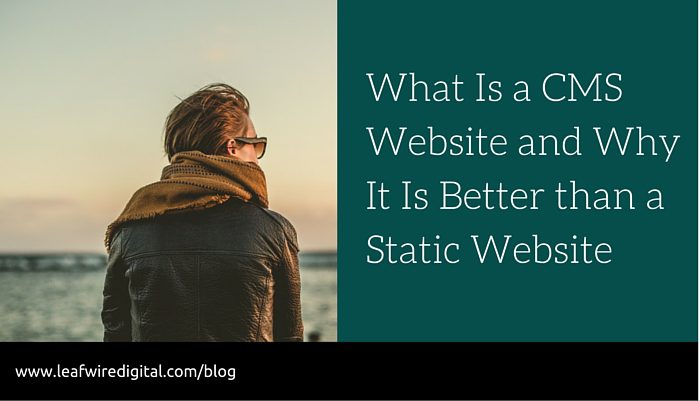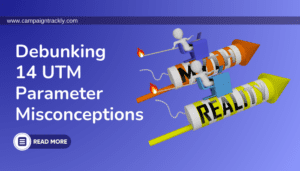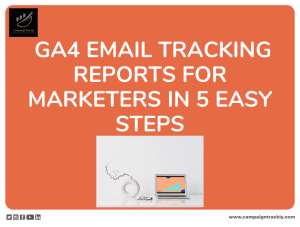
What Is a CMS Website and Why It Is Better than a Static Website
How Content Management Systems Help you Run Better Websites with fewer Resources and in Less Time
What is a CMS
CMS is one of those terms that sound so high-tech and complicated that the majority of people out there don’t even want to hear about it because they think they will never understand what it is anyway.
In reality, CMS is a very easy to use out-of-the-box website solution that saves you an incredible amount of time in managing your website and lets you update your web pages online without the need to learn HTML or invest into external software like Front Page or Dreamweaver. It simplifies website editing and maintenance and usually has a pretty flat learning curve.
CMS stands for content management system. It is pretty much a collection of files, organized neatly in folders like the ones you have on your computer. Unlike the ordinary website files that end with .html (example: aboutus.html or services.html), the majority of these files end with .php, .asp, etc., which indicates they were written in a unique programming language.
Before I continue, I want to clarify that you don’t need to panic when you hear the phrase “programming language”, because in working with a CMS, you will probably never need to see the inside of those files or deal with the programming language itself.
The neat thing about today’s content management systems is that what you see and work with is a very user-friendly and easy to manage control panel that has intuitive menus and forms that pretty much tell you what you need to do to manage and maintain your website effectively.
How will a CMS work for you
Going back to the files being organized neatly in folders, I want to pre-warn you that you cannot just copy-paste these files into your web hosting space and expect to see your website up and running. You need something that glues those files together and pretty much organizes how they work. This something is called a database. Again, “database” sounds too technical, I know, but you don’t need to panic because you will probably never see how your database looks like since it will always be out of your site, hidden away and protected with a password.
You don’t need to manipulate it or work with it directly. The database functions as an automated warehouse that will store every piece of text that you enter, along with all the images and links that you create for your website. When you want those texts or images displayed, the database will smoothly locate them for you and will display them in a user-friendly format. Bottomline – you don’t need to deal with HTML or any other programming language to have a professional website and manage it like a pro.
The difference between regular HTML websites and CMS websites
So, what is the difference between an ordinary internet site, consisting of plain .html files and a content management solution that has programming files and a database?
There is a huge difference between the two. The CMS-based website has a large number of interactive features that come pre-programmed for you and you can activate them when you need them – all it takes is a few clicks of your mouse. These features include:
- interactive polls that collect your visitors opinions and store them for you in graphs or another easy to interpret format;
- automated user management, where you can have visitors sign up with your website and manage their passwords without the need for you to get involved and waste valuable time;
- pre-programmed contact us web forms that you activate in a few quick and easy steps;
- automated display of the latest news from a preferred news source like CNN, Reuters, MSN, or any other news agency that you set up with a few clicks of your mouse;
- ability to let your users rate your content;
- ability to have your visitors use Google Maps directly on your website to locate you;
- ability to login to your site and use a reliable instant editor to edit and update your web pages, images and texts in minutes;
- easy to work with interactive event calendars, photo and picture galleries, and many other functionalities.
With your ordinary website that has .html files you can only display texts, tables and images. Anything else beyond that requires the assistance of a programmer or a specialized website designer. With most ordinary websites you will probably need an external program like Contribute or FrontPage to edit your pages. Every time you need to update your site, you will have to download your files on your computer, edit them in the program of your choice and then upload them back to your hosting environment.
Recently, many host providers have come up with online website editors that will save you a lot of time and effort in managing your site, and will eliminate the need for an external editing software. Still, those editors won’t give you the interactive and easy to work with functionalities that a content management system will provide.
Why you want to invest in a CMS website
In today’s day and age with a new generation of Internet users who are no longer content just to browse through a page with static text and images, content management systems have become a real asset. Their scope and features have improved tremendously, as has the ease and speed of their use.
Some of the most popular content management systems are Open Source, which means that they are free to download and use. Joomla is one of the best award-winning CMS solutions for building small to medium-size websites (medium meaning couple of thousands of pages). Drupal is another popular system that is mostly geared for organizations that have large internet sites. Word Press is the top choice CMS when it comes to blogging.




